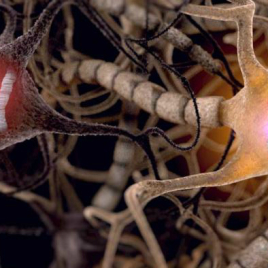
This artist’s conception shows what the TRAPPIST-1 planetary system may look like, based on available data about their diameters, masses and distances from the host star.
(NASA/JPL-Caltech)
Seven Earth-sized exoplanets have been found orbiting a nearby star. An international team of scientistsdiscovered that the six inner planets are located in the temperate zone, where the temperature at the surfaces of these planets could be between 0 and 100 degrees Celsius. The first three planets were spotted back in May 2016. They orbit an ultracool dwarf star located about 39 light years from our Sun. Initial mass estimates suggest that the six inner planets of the extrasolar system probably have rocky compositions, and their masses are similar to the mass of Earth. Researchers note that additional observations are needed to find out more about these planets, particularly the seventh, outermost planet whose orbital period and interaction with the inner planets remain unknown.
Authors:
Michaël Gillon, Amaury H. M. J. Triaud, Brice-Olivier Demory, Emmanuël Jehin, Eric Agol, Katherine M. Deck, Susan M. Lederer, Julien de Wit, Artem Burdanov, James G. Ingalls, Emeline Bolmont, Jeremy Leconte, Sean N. Raymond, Franck Selsis, Martin Turbet, Khalid Barkaoui, Adam Burgasser, Matthew R. Burleigh, Sean J. Carey, Aleksander Chaushev, Chris M. Copperwheat, Laetitia Delrez, Catarina S. Fernandes, Daniel L. Holdsworth, Enrico J. Kotze, Valérie Van Grootel, Yaseen Almleaky, Zouhair Benkhaldoun, Pierre Magain & Didier Queloz
Corresponding author:
Michaël Gillon, Université de Liège, Liège, Belgium, Email: michael.gillon@ulg.ac.be
Original paper published in Nature on February 22, 2017.


